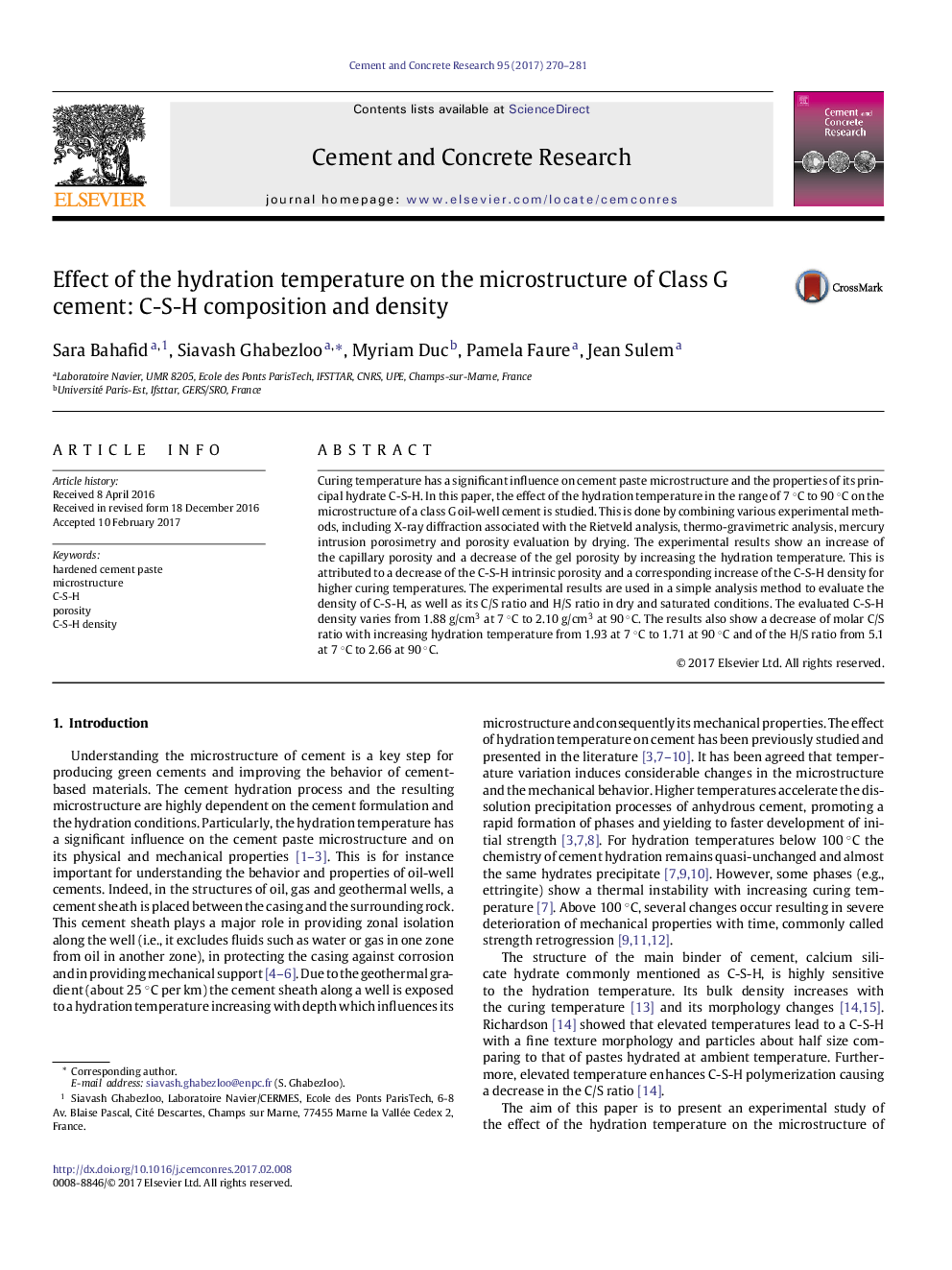| Article ID | Journal | Published Year | Pages | File Type |
|---|---|---|---|---|
| 5437075 | Cement and Concrete Research | 2017 | 12 Pages |
Abstract
Curing temperature has a significant influence on cement paste microstructure and the properties of its principal hydrate C-S-H. In this paper, the effect of the hydration temperature in the range of 7 °C to 90 °C on the microstructure of a class G oil-well cement is studied. This is done by combining various experimental methods, including X-ray diffraction associated with the Rietveld analysis, thermo-gravimetric analysis, mercury intrusion porosimetry and porosity evaluation by drying. The experimental results show an increase of the capillary porosity and a decrease of the gel porosity by increasing the hydration temperature. This is attributed to a decrease of the C-S-H intrinsic porosity and a corresponding increase of the C-S-H density for higher curing temperatures. The experimental results are used in a simple analysis method to evaluate the density of C-S-H, as well as its C/S ratio and H/S ratio in dry and saturated conditions. The evaluated C-S-H density varies from 1.88 g/cm3 at 7 °C to 2.10 g/cm3 at 90 °C. The results also show a decrease of molar C/S ratio with increasing hydration temperature from 1.93 at 7 °C to 1.71 at 90 °C and of the H/S ratio from 5.1 at 7 °C to 2.66 at 90 °C.
Related Topics
Physical Sciences and Engineering
Engineering
Industrial and Manufacturing Engineering
Authors
Sara Bahafid, Siavash Ghabezloo, Myriam Duc, Pamela Faure, Jean Sulem,
